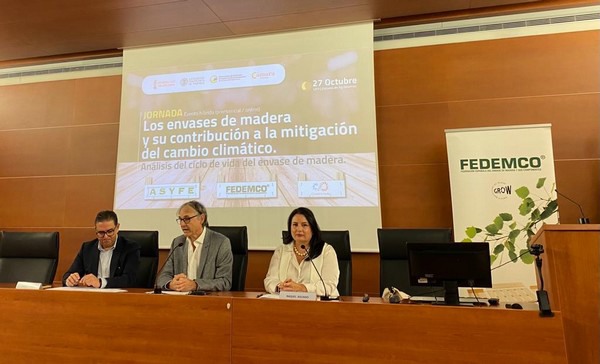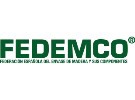The Observatory of Greenhouse Gas Emissions of the Universitat Politècnica de València (UPV) has published an "Analysis of the life cycle of wooden packaging", a study commissioned by ASYFE (Association of Sawmills and Wood Packaging Manufacturers). The report was presented at a special conference devoted to wooden packaging and its contribution to climate change mitigation.
The research, presented by Bruno Armengot, from the ICT against Climate Change research group of the UPV, and Lorenzo Toldrá, CEO of the company GEMINIS TOOLS, looked for the first time into the complete life cycle of wooden packaging, from start to finish, making a comparison between the impact of wooden and cardboard packaging.

The report has taken every stage into account, from the industrial processing of raw materials, including the logistics, to the management of the waste generated. The study, which on this occasion has focused on packaging intended for fruit and vegetables, has shown that wood is the most sustainable material, with the lowest environmental impact in all categories.
Particularly noteworthy is the very positive result when it comes to greenhouse gas emissions, pollution, ecotoxicity and the material's contribution to food safety.
Furthermore, wooden packaging has a great environmental advantage: a "practically zero" water footprint in its manufacture, as highlighted by José Vicente Oliver, Professor of the UPV. "Wooden packaging is also very light, and the combination of very low weight and very good capacity makes wood greatly convenient in logistics," he says.
Other factors highlighted in the report are the contribution of wooden packaging to the cascading use of natural forest resources, its high recycling rate and its appreciation. It is an example of biocircular economy and one of the pillars of the European Green Pact, which aims to achieve the decarbonization of the packaging and logistics sector. Wood is a natural and renewable material that actively contributes to tackling climate change. There's dynamic carbon sequestration, as wood retains the carbon absorbed by the tree throughout its life cycle.
"One m³ of wood retains about one ton of CO₂ and emits 700 kg of oxygen," says Raquel Aguado, director of FEDEMCO and one of the people in charge of presenting the results of the analysis. "Also, the wooden packaging sector promotes sustainable forest management, which helps prevent large forest fires. Thus, the wooden packaging industry contributes to reducing such risks," says Aguado.
Life cycle analysis is the key scientific methodology in the transition to the circular bioeconomy in this sector; a sector that, as the document shows, contributes to complying with the European Union's industrial sustainability policies and regulations, in line with the European Forestry Strategy 2030.
Aware of this, and determined to lead the sector in Europe, FEDEMCO has developed and promoted ECOWOOX®. The European quality mark recognizes the total recyclability of wooden packaging and is ahead of current European regulations. A seal that ratifies the commitment of the wooden packaging sector to the environment and demonstrates its recyclability.
 For more information:
For more information:
FEDEMCO
www.fedemco.com
